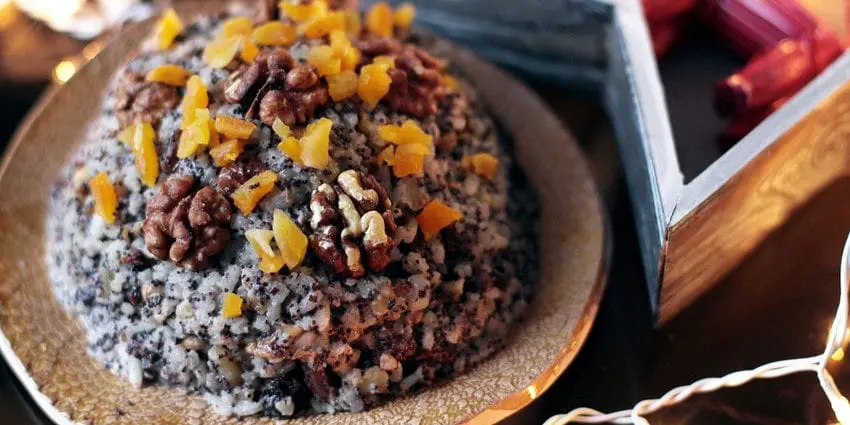Unfortunately, most of the ancient rituals have not survived to this day.
The Greek word “kutia” can be translated as “boiled wheat”. This porridge with fruits and nuts was served at funerals. This dish existed in the days of Byzantium and remains a relevant treat to this day. Food for certain ceremonies is a symbol of the event that has occurred.
More than one recipe for cooking kutya has long been known. Its different cooking methods and names do not change the essence. This dish is always served at commemorations, but Slavic peoples were served kutya at weddings and at the celebration of the birth of a child. These sacred rituals are always accompanied by ritual food.
The seed of a plant from ancient times has symbolized new life or rebirth. They are similar to human life, in order to be born, he needs to get into the earth. Wheat seeds in this national dish symbolize immortality. Other flavors in the dish also have their own purpose. Raisins, for example, are also associated with eternal life, and berries are seeds – the beginning of a new life story.
Nuts and poppy seeds carry a similar meaning. Wake and funeral for the Slavs is the rebirth of the human soul. The birth of a child is the beginning of life.
Following one of the recipes, you can cook kutya with a sweet dish. To do this, you need to add a sufficient amount of honey to the finished dish. The honey filling of kutia symbolizes sweetness and the paradise of eternal life.
According to ancient beliefs, dead souls in heaven received all the unearthly pleasures that are inaccessible in ordinary human life. Usually, all kinds of additives are very generously and richly added to kutya: nuts, honey, berries, fruits, poppy seeds. The wealth and well-being of the family directly depends on this.
When inviting guests to the table, several ears of wheat were placed under each bowl with the served dish. Subsequently, people kept these gifts for a very long time so that they would protect the owner from various troubles. During the holiday, all domestic animals and birds were fed with kutya. It was believed that they would hurt less. Kutia was certainly brought to the house of other relatives and friends if they lived in another territory.
There are two types of kutia dishes: memorial and eve. Not a single holiday was complete among the Christian peoples without kutya. It was prepared each time in different ways, changing and adding ingredients.
There are especially many holidays in winter. Kutia for the celebration of the holy feast of Christmas was prepared on lean products, since the Holy Lent was still going on. Before the New Year, the most rich and generous kutia was prepared. This dish symbolized a good harvest and fertility in the coming year. During the meal, they always remembered their deceased ancestors.
Kutya Epiphany among Christians is always poor, cooked in water with a small addition of raisins. If the water for baptism had not yet been consecrated, Christians could not use other dishes except kutya. It was the Orthodox kutia that was always consecrated in the church. It was served during the first week of Lent. The Slavs even performed fortune-telling rites in kutya.
The funeral kutia was served to everyone at the commemoration with good memories of the deceased. All guests must have tasted at least a spoonful of kutya.
Many traditions of cooking kutya no longer have their relevance, but, nevertheless, they have a place to be.










